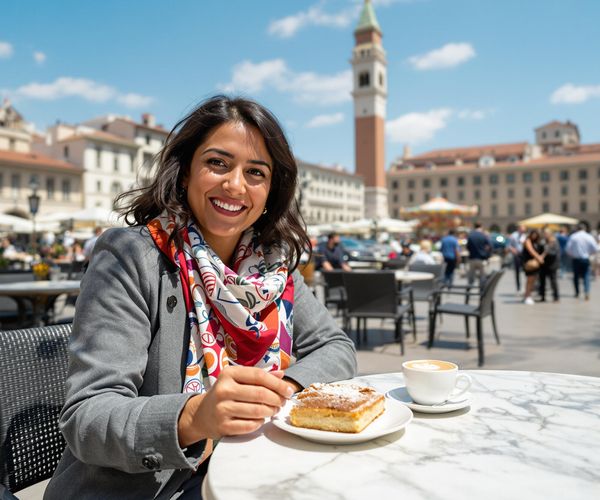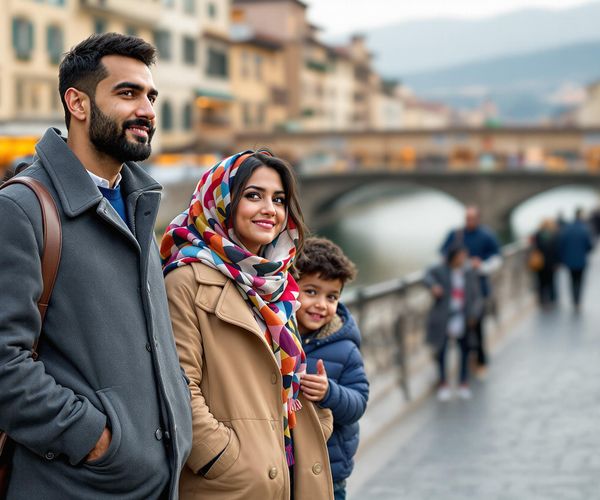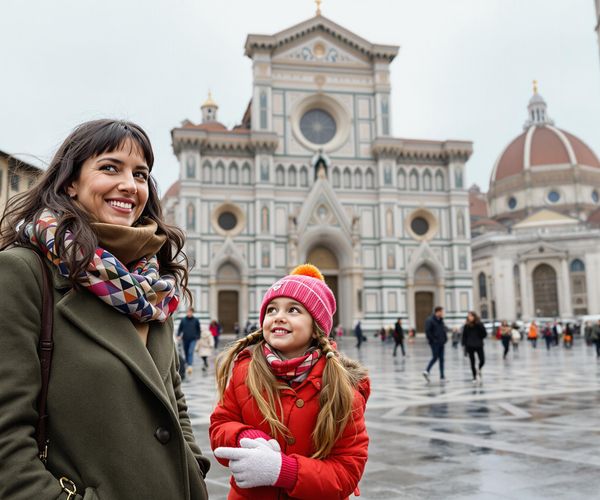
Florence: The Cradle of Renaissance
Discover Florence: The Heart of Renaissance, where art, history, and culture converge in the picturesque landscapes of Tuscany.
Florence, the capital of Italy's Tuscany region, is an enchanting city known for its rich artistic heritage and history. Nestled along the banks of the Arno River, Florence is a treasure trove of Renaissance art and architecture. The city's historic center, a UNESCO World Heritage site, is home to stunning landmarks such as the Cathedral of Santa Maria del Fiore, also known as the Duomo, with its magnificent dome designed by Brunelleschi. Visitors can wander through the Uffizi Gallery, one of the most famous art museums in the world, housing masterpieces by Michelangelo, Leonardo da Vinci, and Botticelli. The Ponte Vecchio, a medieval stone bridge, offers unique shopping experiences with its array of jewelry shops. The Boboli Gardens, with its lush greenery and sculptures, provides a peaceful escape from the bustling city streets. Florence's culinary scene is equally captivating, offering delicious Tuscan cuisine, from hearty ribollita soup to the famous Florentine steak. Don't forget to indulge in a glass of Chianti from the surrounding vineyards. As the birthplace of the Italian language and home to literary giants such as Dante and Machiavelli, Florence provides a deep dive into Italy's cultural and intellectual history.
Local tips in Florence
- Book tickets for popular attractions like the Uffizi Gallery and the Accademia Gallery in advance to avoid long queues.
- Visit the Duomo early in the morning or late afternoon to avoid the crowds and enjoy the best views from the top.
- Take a stroll across the Ponte Vecchio at sunset for a magical experience and great photo opportunities.
- Explore the Oltrarno district for a more authentic and less touristy experience, with artisan workshops and cozy cafes.
- Try traditional Florentine dishes at local trattorias rather than tourist restaurants for a genuine taste of Tuscany.
Neighbourhoods in Florence
Florence: The Cradle of Renaissance
Florence, the capital of Italy's Tuscany region, is an enchanting city known for its rich artistic heritage and history. Nestled along the banks of the Arno River, Florence is a treasure trove of Renaissance art and architecture. The city's historic center, a UNESCO World Heritage site, is home to stunning landmarks such as the Cathedral of Santa Maria del Fiore, also known as the Duomo, with its magnificent dome designed by Brunelleschi. Visitors can wander through the Uffizi Gallery, one of the most famous art museums in the world, housing masterpieces by Michelangelo, Leonardo da Vinci, and Botticelli. The Ponte Vecchio, a medieval stone bridge, offers unique shopping experiences with its array of jewelry shops. The Boboli Gardens, with its lush greenery and sculptures, provides a peaceful escape from the bustling city streets. Florence's culinary scene is equally captivating, offering delicious Tuscan cuisine, from hearty ribollita soup to the famous Florentine steak. Don't forget to indulge in a glass of Chianti from the surrounding vineyards. As the birthplace of the Italian language and home to literary giants such as Dante and Machiavelli, Florence provides a deep dive into Italy's cultural and intellectual history.
When is the best time to go to Florence?
Iconic landmarks you can’t miss
Piazza del Duomo
Discover the iconic Piazza del Duomo in Florence, a stunning plaza filled with history, art, and the breathtaking architecture of the Renaissance era.
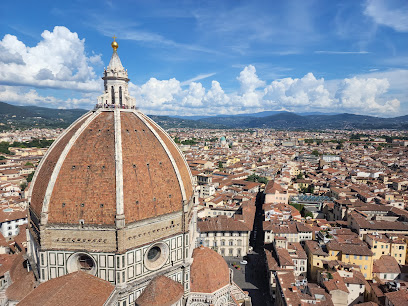
Ponte Vecchio
Discover Ponte Vecchio, Florence's iconic bridge that combines stunning architecture, rich history, and vibrant shopping, offering breathtaking views of the Arno River.
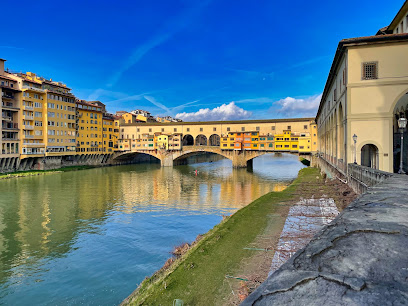
Cathedral of Santa Maria del Fiore
Discover Florence's Cathedral of Santa Maria del Fiore, a stunning architectural masterpiece and a symbol of the city's rich history and culture.

Piazzale Michelangelo
Experience breathtaking views of Florence from Piazzale Michelangelo, an iconic terrace and must-visit tourist attraction in the heart of the city.
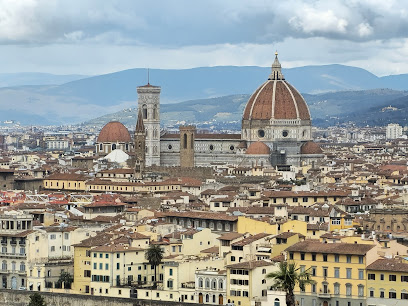
Piazza della Signoria
Explore the enchanting Piazza della Signoria, a historical plaza in Florence surrounded by stunning architecture, art, and a lively atmosphere.
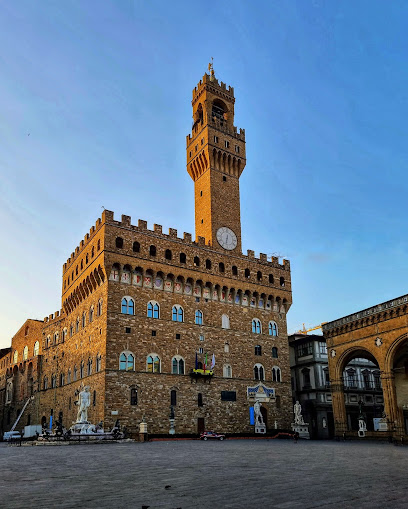
Uffizi Gallery
Discover the Uffizi Gallery in Florence, home to extraordinary Renaissance art from masters like Botticelli and Michelangelo, a must-visit for art lovers.
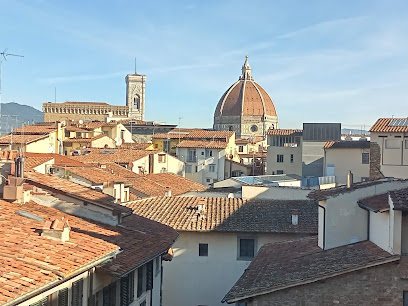
Basilica of Santa Croce in Florence
Explore the Basilica of Santa Croce, Florence's grand Gothic church, home to stunning art, architectural marvels, and the tombs of Italy's greats.

Pitti Palace
Explore the Pitti Palace in Florence, a stunning art museum showcasing the Medici legacy through exquisite art, architecture, and serene gardens.
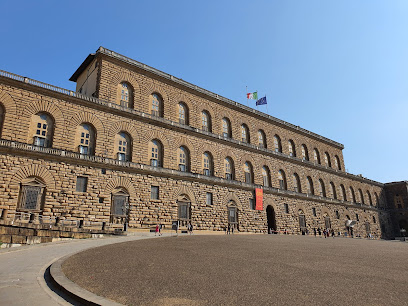
Basilica of Santa Maria Novella
Explore the architectural beauty and artistic treasures of the Basilica of Santa Maria Novella, a key highlight of Florence's historical landscape.
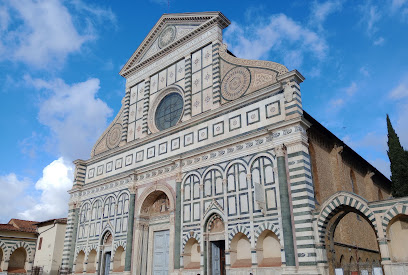
Piazza della Repubblica
Explore the vibrant Piazza della Repubblica in Florence, a historic square filled with stunning architecture, lively cafes, and local culture.
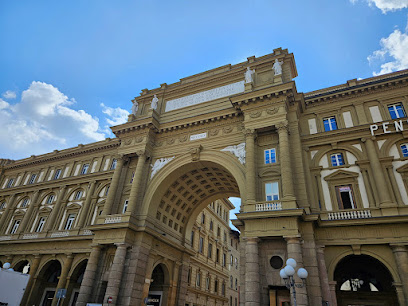
The Boboli Gardens
Explore the enchanting Boboli Gardens in Florence, a stunning blend of art, nature, and history that offers breathtaking views and serene pathways.
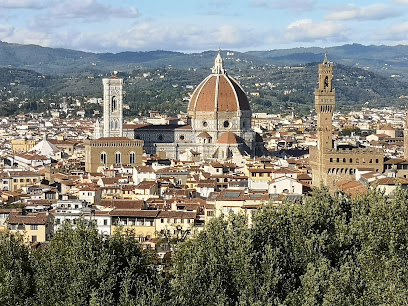
Palazzo Vecchio
Discover Palazzo Vecchio: A Historic Museum and Architectural Marvel in the Heart of Florence, Showcasing Renaissance Art and Political Heritage.

Basilica di San Lorenzo
Explore the stunning Basilica di San Lorenzo in Florence, a masterpiece of Renaissance architecture and a vital part of the city's rich artistic heritage.
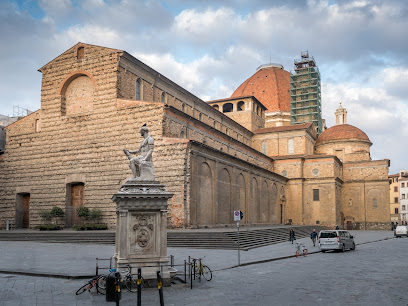
Opera del Duomo Museum
Explore the Opera del Duomo Museum: a treasure trove of Renaissance art and history in the heart of Florence.
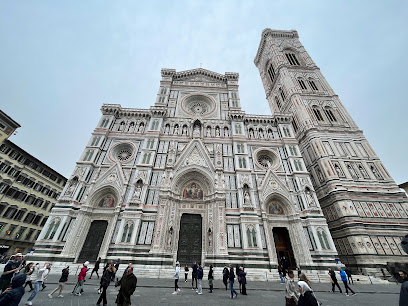
Strozzi Palace
Explore the Strozzi Palace in Florence, where Renaissance architecture meets a vibrant art scene, enriching your travel experience in Italy.
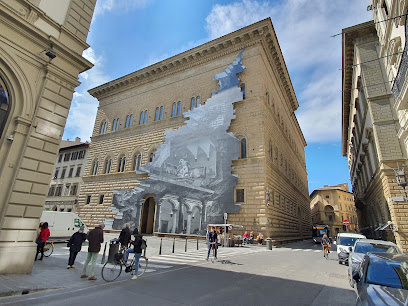
Unmissable attractions to see
Cathedral of Santa Maria del Fiore
Discover the breathtaking Cathedral of Santa Maria del Fiore, a masterpiece of Renaissance architecture and a must-visit in Florence, Italy.

Piazza della Signoria
Discover the cultural heart of Florence at Piazza della Signoria, home to stunning art, iconic architecture, and a vibrant atmosphere.
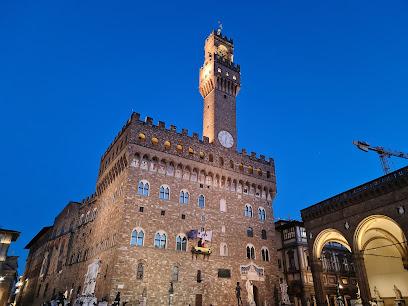
Uffizi Galleries
Explore the Uffizi Galleries in Florence, home to Renaissance masterpieces and a symbol of Italy's rich cultural heritage.
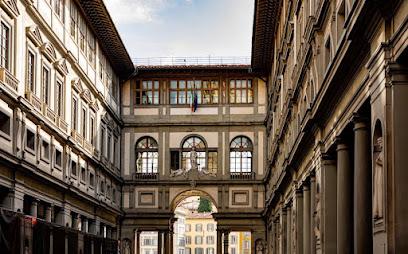
Galleria dell’Accademia di Firenze
Explore the Galleria dell’Accademia in Florence, home to Michelangelo’s David and a stunning collection of Renaissance masterpieces.
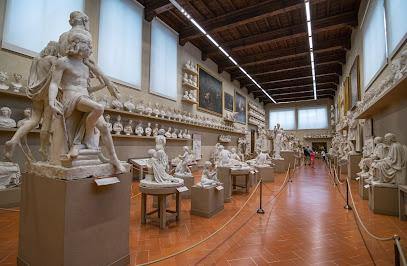
Basilica of Santa Croce in Florence
Explore the Basilica of Santa Croce in Florence, a masterpiece of Gothic architecture and the resting place of Italy's greatest minds.
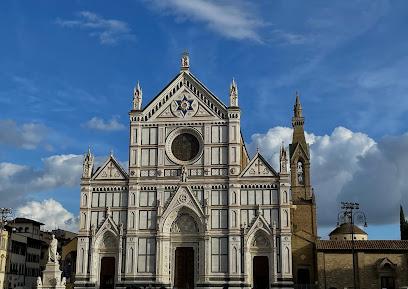
Palazzo Pitti
Discover the opulence of the Medici family at Palazzo Pitti, a stunning Renaissance palace and museum in the heart of Florence, Italy.
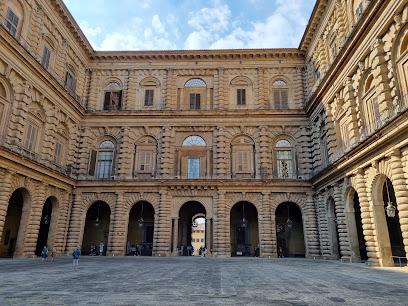
Basilica of Santa Maria Novella
Explore the exquisite Basilica of Santa Maria Novella, a masterpiece of Gothic architecture and art in the heart of Florence, Italy.
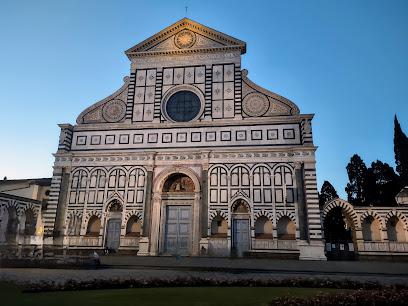
Leonardo Da Vinci Museum
Explore the brilliance of Leonardo Da Vinci at the interactive museum in Florence, where art and science come to life for all ages.
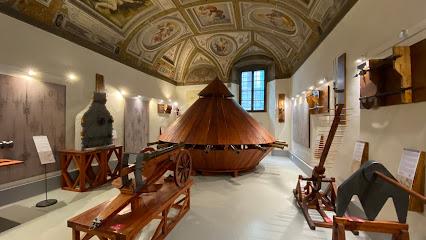
Boboli Gardens
Discover the enchanting Boboli Gardens in Florence, a Renaissance masterpiece filled with art, history, and stunning views of the city.
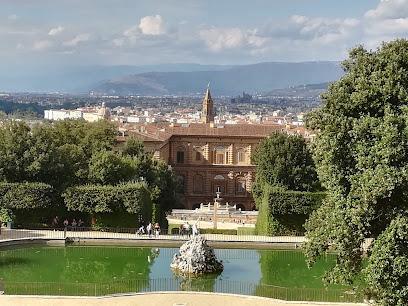
Palazzo Vecchio
Experience the rich history and stunning artistry of Palazzo Vecchio, Florence's iconic museum and historical landmark.
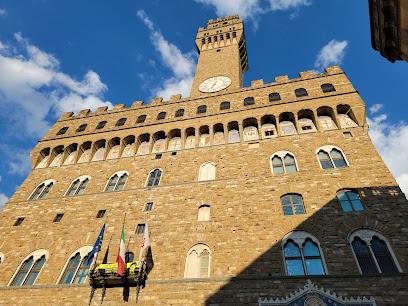
Leonardo da Vinci Interactive Museum
Discover the genius of Leonardo da Vinci through interactive exhibits and hands-on experiences at this unique Florence museum.
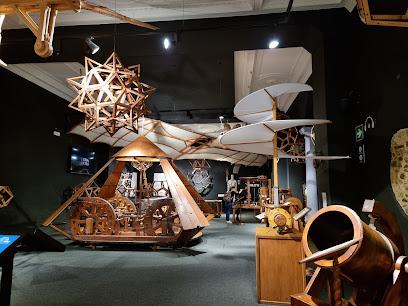
Parco delle Cascine
Explore the beauty of Parco delle Cascine, Florence's largest park, perfect for relaxation, recreation, and enjoying the vibrant local culture amidst stunning scenery.
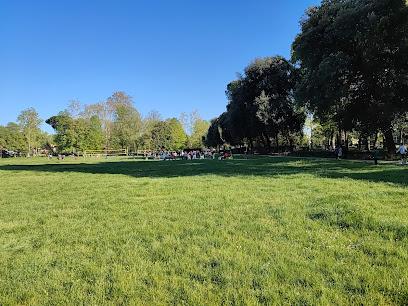
Mugello Circuit
Discover the exhilarating Mugello Circuit, a premier racing venue in Tuscany, where motorsport meets stunning landscapes and unforgettable experiences await.
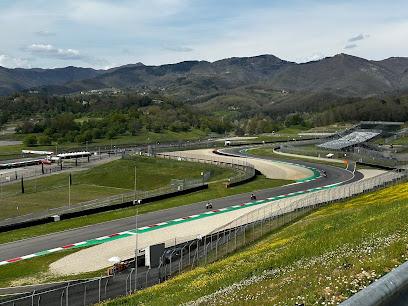
Basilica di San Lorenzo
Explore the Basilica di San Lorenzo, a Renaissance masterpiece in Florence, blending history, art, and spiritual beauty in a vibrant setting.
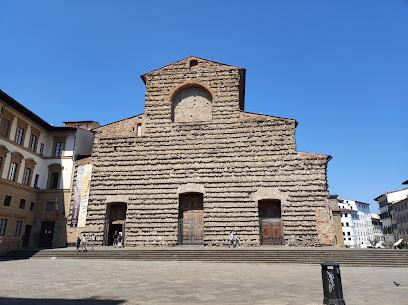
Opera del Duomo Museum
Discover the artistic treasures of Florence at the Opera del Duomo Museum, a captivating journey through history and art.
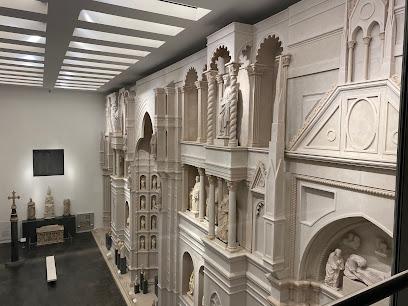
Essential places to dine
All’Antico Vinaio
Discover the authentic flavors of Italy at All’Antico Vinaio, where delicious sandwiches meet vibrant Florentine culture.
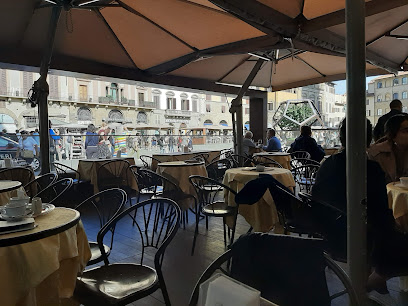
Il Latini
Discover authentic Tuscan cuisine at Il Latini in Florence - where tradition meets flavor in every dish.
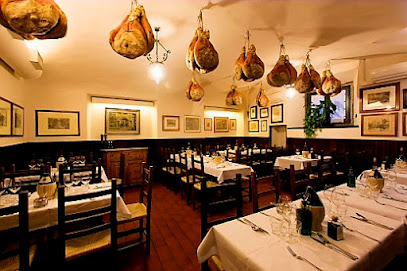
Ristorante Romantico il Paiolo
Experience authentic Tuscan flavors at Ristorante il Paiolo in Florence, where romance meets exceptional Italian dining.
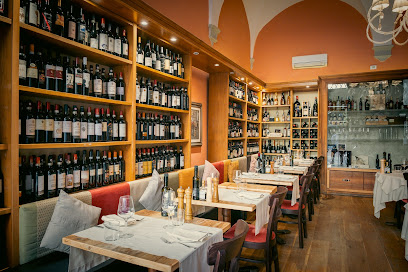
La Buchetta Food & Wine Restaurant
Discover La Buchetta in Florence for an unforgettable journey through traditional Tuscan cuisine paired with exquisite local wines.

Mattacena
Discover the heart of Tuscany at Mattacena, where authentic flavors meet warm hospitality in the beautiful city of Florence.
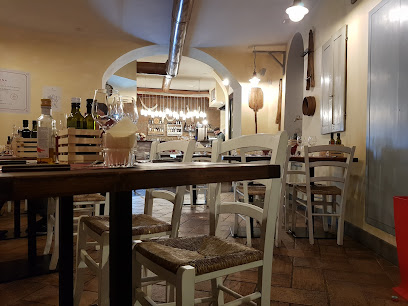
Le Cappelle Medicee Restorante
Experience authentic Italian cuisine at Le Cappelle Medicee, where delicious pizzas meet succulent steaks in the heart of Florence.
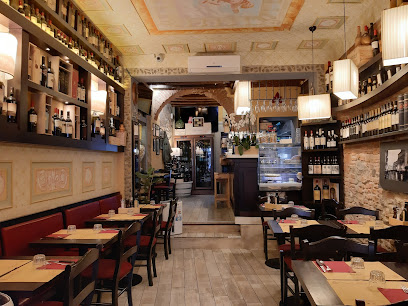
Il Gatto e la Volpe | Florence
Discover authentic Tuscan flavors at Il Gatto e la Volpe in Florence – where every meal tells a story.
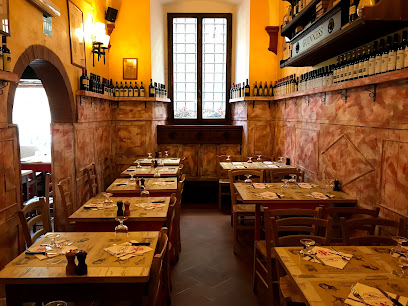
La Bussola
Experience authentic Italian cuisine at La Bussola in Florence - where every dish tells a story of tradition and flavor.

La Giostra
Discover La Giostra: A premier Tuscan restaurant in Florence offering authentic Italian cuisine amidst enchanting surroundings.
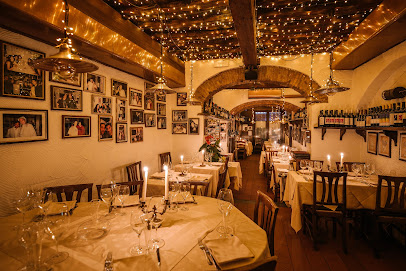
Ristorante Oliviero 1962
Experience authentic Tuscan cuisine at Ristorante Oliviero 1962 in Florence—where tradition meets modernity in every delicious bite.
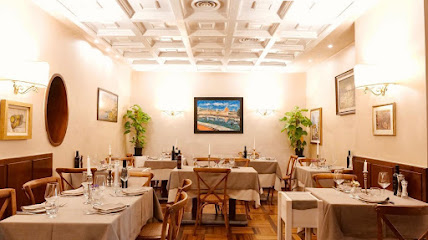
Il Santo Bevitore
Experience authentic Italian cuisine at Il Santo Bevitore in Florence - where tradition meets modern culinary artistry.
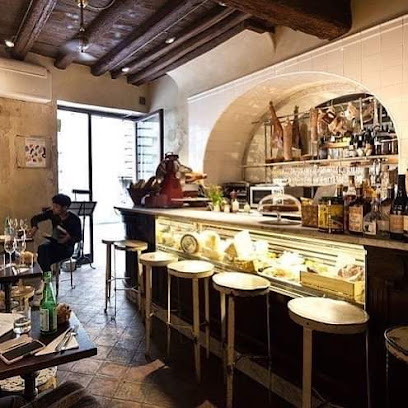
Cinto-Cucina In Torre
Experience authentic Tuscan cuisine at Cinto-Cucina In Torre - where tradition meets modern flavor in the heart of Florence.
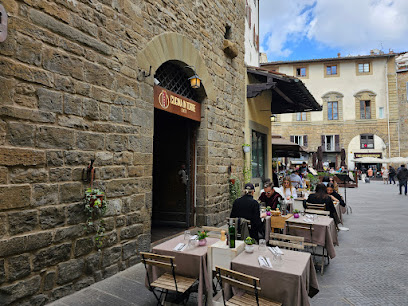
Il Vezzo
Discover authentic Tuscan flavors at Il Vezzo, Florence's beloved Italian restaurant offering a delightful dining experience.

Vini e Vecchi Sapori
Experience the true flavors of Tuscany at Vini e Vecchi Sapori, where authentic Italian cuisine meets warm hospitality in the heart of Florence.
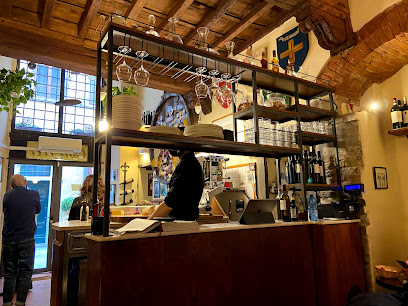
Coquinarius
Discover authentic Italian cuisine at Coquinarius in Florence - where tradition meets modern taste in a cozy setting.

Markets, malls and hidden boutiques
Rinascente Firenze
Discover the luxury of shopping at Rinascente Firenze, where fashion meets culture in the heart of Florence.

Tartan Vintage
Explore Tartan Vintage in Florence, a charming vintage clothing store offering unique fashion pieces that embody timeless style and sustainability.
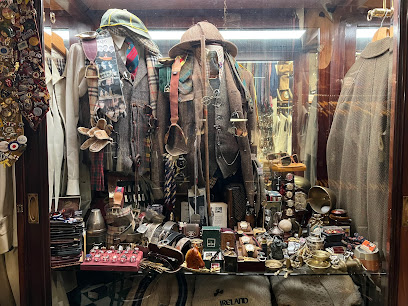
Pylones Firenze - Calzaiuoli
Discover Pylones Firenze - Calzaiuoli, where vibrant gifts and quirky souvenirs capture the essence of Florence's charm and creativity.

La Pelle Srl Firenze
Explore La Pelle Srl Firenze for exquisite Italian leather goods, from handbags to shoes, celebrating craftsmanship and style in the heart of Florence.
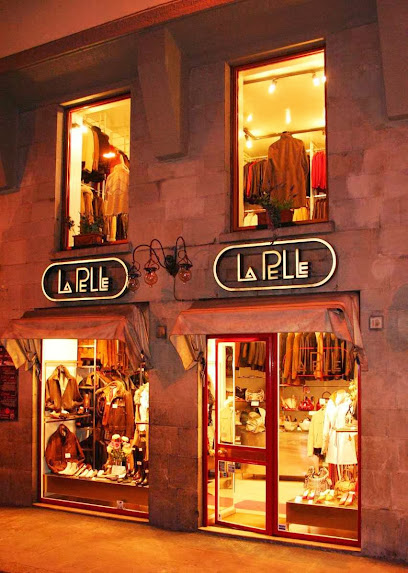
Lady Jane B.
Experience the charm of Florence's vintage fashion at Lady Jane B., a boutique offering unique women's clothing and accessories.
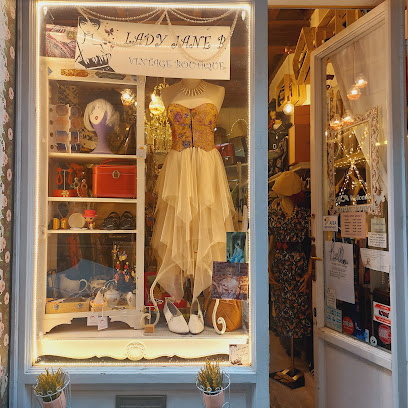
Street Doing Vintage Couture
Discover unique vintage fashion treasures at Street Doing Vintage Couture in the heart of Florence, where style meets history.

L'Arte de' Ciompi Firenze - Negozio d'Artigianato Tipico Fiorentino e Italiano
Explore L'Arte de' Ciompi in Florence for authentic Italian handicrafts and unique souvenirs that capture the essence of Tuscany.

Mio Concept Store
Explore Florentine artistry at Mio Concept Store, featuring unique handmade crafts, jewelry, and souvenirs in the heart of Florence.
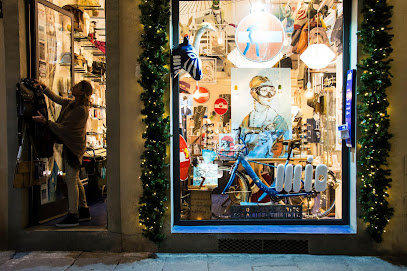
Davide Cerasi Leather Boutique
Experience the artistry of Italian leather at Davide Cerasi Leather Boutique, a must-visit destination for luxury shoppers in Florence.
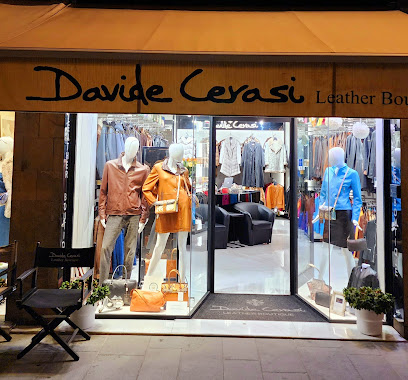
Boutique Nadine
Discover unique women's fashion and accessories at Boutique Nadine, a premier shopping destination in the heart of Florence, Italy.
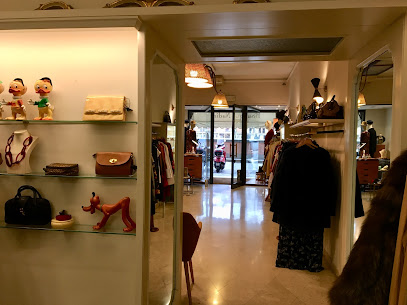
FLY - Fashion Loves You Store (Vintage and Student Made Fashion)
Explore unique vintage fashion at FLY - Fashion Loves You Store in Florence, where each piece has a story and sustainability meets style.
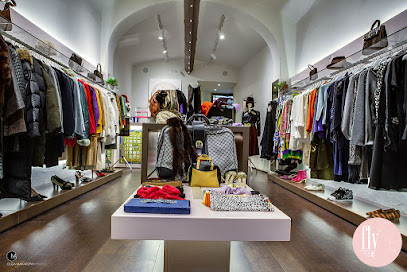
Desii Vintage
Discover timeless fashion treasures at Desii Vintage, Florence's premier destination for unique clothing and accessories that blend history with style.
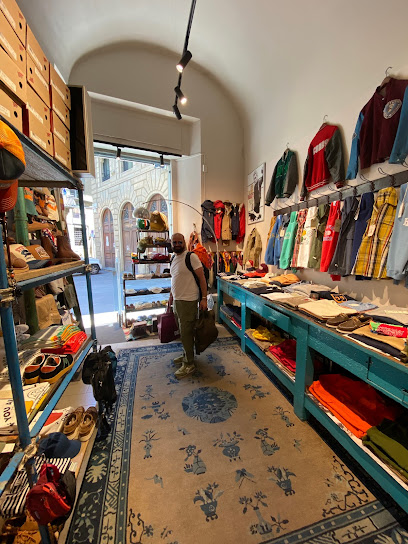
Italy Souvenir - Gift Shop
Explore Italy Souvenir - Gift Shop for unique handcrafted treasures and authentic keepsakes that capture the spirit of Florence.
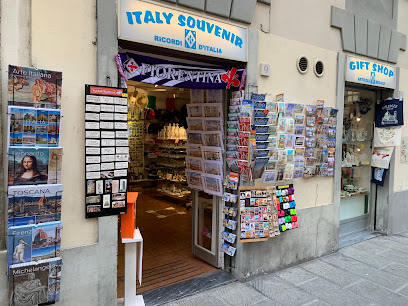
Art & Fashion Vintage
Explore the eclectic charm of Art & Fashion Vintage, a treasure trove of unique clothing, antiques, and crafts in the heart of Florence.
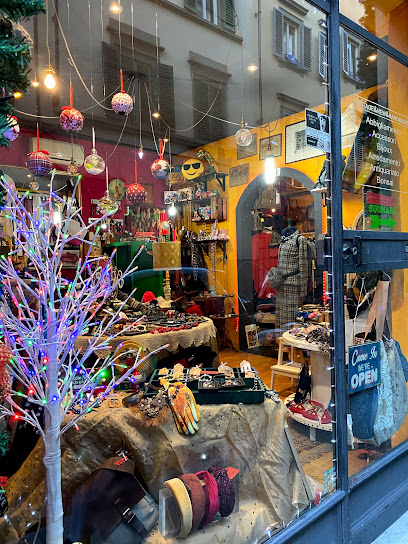
Galeria
Discover unique fashion and art at Galeria in Florence, where local craftsmanship meets Italian elegance in a charming boutique setting.
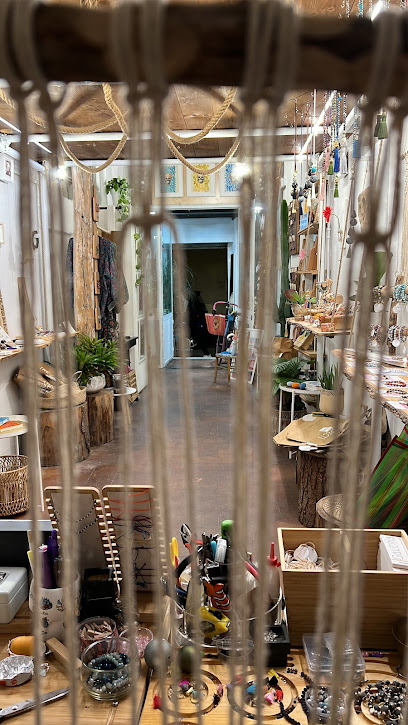
Essential bars & hidden hideouts
The Old Stove Irish Pub
Experience the perfect blend of Irish charm and Florentine culture at The Old Stove Irish Pub, a vibrant spot for food, drinks, and entertainment.

Locale Firenze
Discover Locale Firenze, a luxurious bar and restaurant blending Tuscan tradition with modern culinary excellence in the heart of Florence.
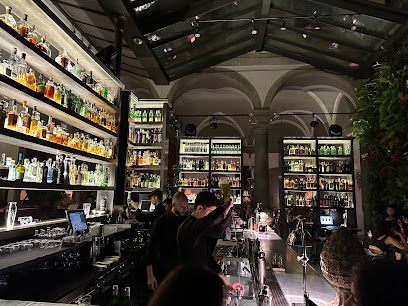
The Joshua Tree Pub
Experience the heart of Florence at The Joshua Tree Pub, where great food, drinks, and sports come together in a cozy atmosphere.
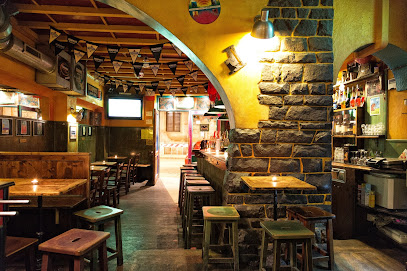
Mad - Souls & Spirits
Discover Mad - Souls & Spirits, where innovative cocktails meet a vibrant nightlife in the heart of Florence.
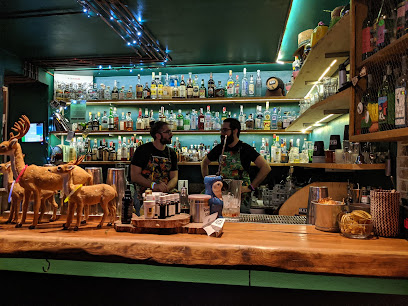
Rasputin
Experience the allure of Rasputin, Florence's premier cocktail bar, where sophisticated drinks and enchanting ambiance meet in a chic nightlife setting.
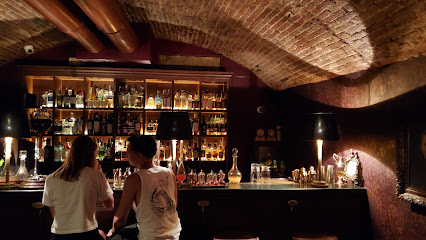
THE ARTS INN
Experience the vibrant fusion of cocktails and art at The Arts Inn, a unique bar and gallery in the heart of Florence, Italy.
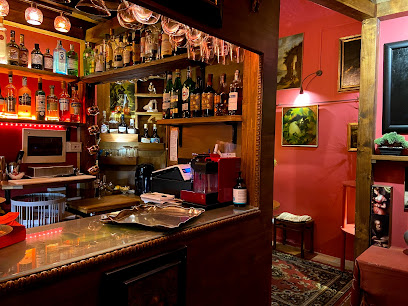
One Eyed Jack
Discover the vibrant nightlife of Florence at One Eyed Jack, where great beer, lively music, and unforgettable moments await every night.
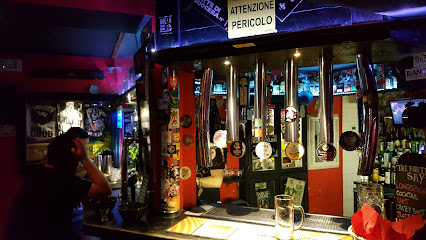
Love Craft
Experience the vibrant nightlife of Florence at Love Craft, a top bar offering creative cocktails and a lively atmosphere for every traveler.
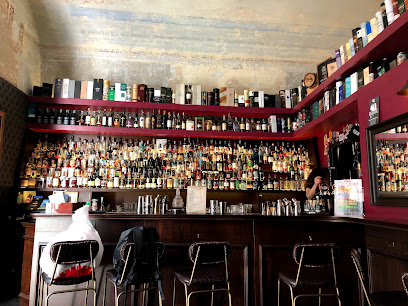
Loggia Roof Bar
Experience breathtaking views and exquisite cocktails at Loggia Roof Bar, Florence's premier rooftop destination for relaxation and indulgence.
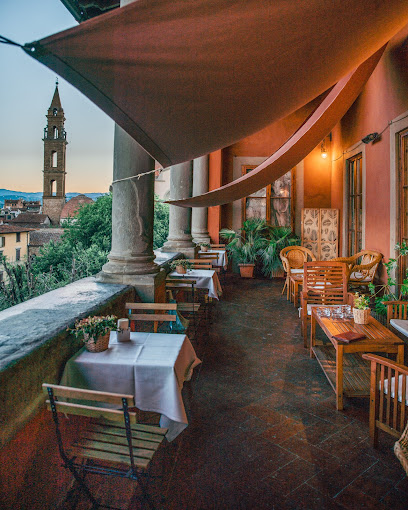
FUK - Cocktail bar, music & more
Discover FUK Cocktail Bar in Florence, where exceptional cocktails meet electrifying nightlife and a chic atmosphere.
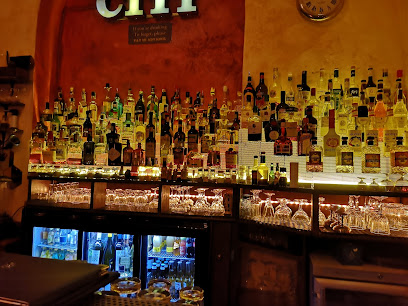
Public House 27
Discover the vibrant atmosphere of Public House 27, a beloved pub in Florence known for its local brews and friendly vibe.
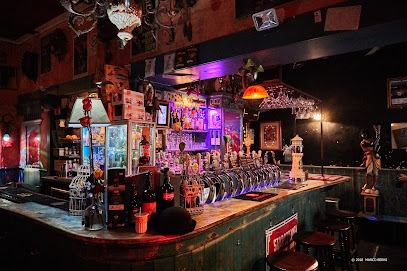
The Hidden Pub
Experience the unique blend of local craft beers and delicious cuisine at The Hidden Pub, a charming gastropub in the heart of Florence.
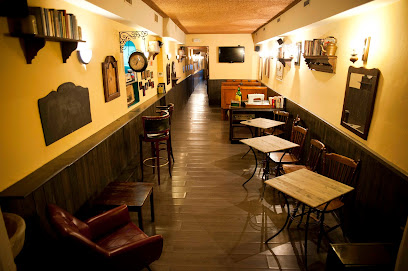
Friends Pub
Experience the vibrant nightlife of Florence at Friends Pub, where locals and tourists unite over drinks and good times.

PanicAle
Discover PanicAle in Florence, where craft cocktails and local beers meet vibrant nightlife in a stunning Italian setting.
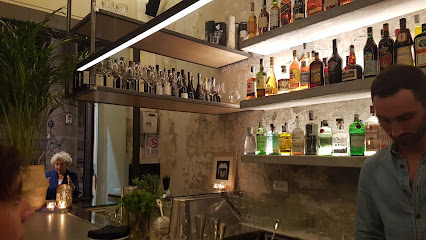
Bitter Bar
Discover Bitter Bar in Florence – where inventive cocktails and a lively atmosphere create an unforgettable night out.
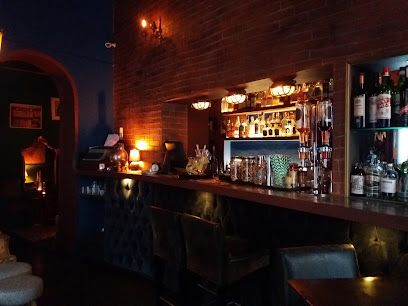
Travel experiences inspired by this city
Explore more travel diariesLocal Phrases
-
- HelloCiao
[chow] - GoodbyeArrivederci
[ah-ree-veh-dehr-chee] - YesSì
[see] - NoNo
[noh] - Please/You're welcomePer favore/Prego
[pehr fah-voh-reh/preh-goh] - Thank youGrazie
[grah-tsyeh] - Excuse me/SorryScusi/Mi dispiace
[skoo-zee/mee dee-spyah-che] - How are you?Come stai?
[koh-meh stah-ee] - Fine. And you?Bene. E tu?
[beh-neh. eh too] - Do you speak English?Parli inglese?
[pahr-lee een-gleh-zeh] - I don't understandNon capisco
[nohn kah-pee-skoh]
- HelloCiao
-
- I'd like to see the menu, pleaseVorrei vedere il menu, per favore
[vohr-eh-ee veh-deh-reh eel meh-noo, pehr fah-voh-reh] - I don't eat meatNon mangio carne
[nohn mahn-joh kahr-neh] - Cheers!Salute!
[sah-loo-teh] - I would like to pay, pleaseVorrei pagare, per favore
[vohr-eh-ee pah-gah-reh, pehr fah-voh-reh]
- I'd like to see the menu, pleaseVorrei vedere il menu, per favore
-
- Help!Aiuto!
[ah-yoo-toh] - Go away!Vai via!
[vah-ee vyah] - Call the Police!Chiama la polizia!
[kyah-mah lah poh-lee-tsya] - Call a doctor!Chiama un dottore!
[kyah-mah oon doht-toh-reh] - I'm lostSono perso
[soh-noh pehr-soh] - I'm illMi sento male
[mee sehn-toh mah-leh]
- Help!Aiuto!
-
- I'd like to buy...Vorrei comprare...
[vohr-eh-ee kohm-prah-reh] - I'm just lookingSto solo guardando
[stoh soh-loh gwahr-dahn-doh] - How much is it?Quanto costa?
[kwahn-toh koh-stah] - That's too expensiveÈ troppo caro
[eh trohp-poh kah-roh] - Can you lower the price?Puoi abbassare il prezzo?
[pwah-ee ab-bah-sah-reh eel preh-tsoh]
- I'd like to buy...Vorrei comprare...
-
- What time is it?Che ora è?
[keh oh-rah eh] - It's one o'clockÈ l'una
[eh loo-nah] - Half past (10)Sono le dieci e mezza
[soh-noh leh dyeh-chee eh meh-tsah] - MorningMattina
[maht-tee-nah] - AfternoonPomeriggio
[poh-meh-ree-joh] - EveningSera
[seh-rah] - YesterdayIeri
[yeh-ree] - TodayOggi
[oh-jee] - TomorrowDomani
[doh-mah-nee] - 1Uno
[oo-noh] - 2Due
[doo-eh] - 3Tre
[treh] - 4Quattro
[kwah-troh] - 5Cinque
[cheen-kweh] - 6Sei
[seh-ee] - 7Sette
[seht-teh] - 8Otto
[oh-ttoh] - 9Nove
[noh-veh] - 10Dieci
[dyeh-chee]
- What time is it?Che ora è?
-
- Where's a/the...?Dov'è...?
[doh-veh] - What's the address?Qual è l'indirizzo?
[kwahl eh leen-dee-rit-soh] - Can you show me (on the map)?Puoi mostrarmi (sulla mappa)?
[pwah-ee mohs-trar-mee (sool-lah mahp-pah)] - When's the next (bus)?Quando passa il prossimo (autobus)?
[kwahn-doh pahs-sah eel prohs-see-moh (ow-toh-boos)] - A ticket (to ....)Un biglietto (per ....)
[oon beel-lyet-toh (pehr)]
- Where's a/the...?Dov'è...?
History of Florence
-
Florence, originally known as 'Florentia,' was established by Julius Caesar in 59 BC as a settlement for veteran soldiers. Its strategic location along the Arno River made it a crucial hub for trade and commerce. The grid layout of the city, typical of Roman planning, can still be seen in Florence's historic center.
-
The Medici family, wealthy bankers, rose to power in the 15th century and became the de facto rulers of Florence. They were great patrons of the arts and fostered the Renaissance, a cultural movement that profoundly influenced European art, architecture, and science. Notable Medici figures include Cosimo de' Medici, Lorenzo the Magnificent, and Catherine de' Medici.
-
Florence is often hailed as the cradle of the Renaissance. Between the 14th and 17th centuries, the city was a vibrant center of artistic and intellectual activity. Iconic figures such as Leonardo da Vinci, Michelangelo, and Botticelli created some of their masterpieces here. The construction of architectural marvels like the Florence Cathedral (Il Duomo) and the Palazzo Vecchio also took place during this era.
-
In the mid-16th century, Florence became the capital of the Grand Duchy of Tuscany under the rule of Cosimo I de' Medici. This period saw significant urban development and the construction of important landmarks, including the Uffizi Gallery. The Grand Duchy era lasted until the unification of Italy in the 19th century.
-
In 1865, Florence was chosen as the temporary capital of the newly unified Kingdom of Italy, a status it held until Rome became the capital in 1871. This period saw rapid modernization and expansion, including the demolition of the city’s medieval walls to make way for new boulevards and infrastructure.
-
Florence experienced significant turmoil during World War II, including the destruction of its historic bridges by retreating German forces. In 1966, the city faced another catastrophe when the Arno River flooded, causing extensive damage to art and architecture. The international community rallied to aid in the restoration efforts, preserving Florence's cultural heritage.
-
Today, Florence is a UNESCO World Heritage Site and continues to be a global center for art, culture, and scholarship. The city's museums, galleries, and historic sites attract millions of visitors annually, ensuring that Florence remains a living testament to its rich and varied history.
Florence Essentials
-
Florence is well-connected by air, rail, and road. The nearest international airport is Florence Airport, Peretola (FLR), located about 6 km from the city center. You can take a taxi, shuttle bus, or the T2 tram line directly to the city center. Florence is also a major hub on Italy's high-speed train network, with regular trains arriving at Santa Maria Novella (SMN) station from cities like Rome, Milan, and Venice. For those traveling by car, the city is accessible via the A1 and A11 motorways.
-
Florence is a compact city, and many attractions are within walking distance. Public transportation includes buses and trams operated by ATAF. Tickets can be purchased at tabacchi (tobacco shops), newsstands, or via the ATAF app. Taxis are available but can be expensive. Ride-sharing apps like Uber are not available. For a unique experience, consider renting a bike or a Vespa to explore the city. Note that the historic center is a ZTL (Limited Traffic Zone), so driving is restricted in certain areas.
-
The official currency in Florence is the Euro (EUR). Credit and debit cards are widely accepted in hotels, restaurants, and shops. However, it's advisable to carry some cash, especially for small purchases or at markets. ATMs are readily available throughout the city. Be aware that American Express and Diners Club cards are less commonly accepted.
-
Florence is generally safe for tourists. However, like any other tourist destination, it's essential to be vigilant. Pickpocketing can occur in crowded areas such as markets, train stations, and tourist sites. Avoid the area around the Santa Maria Novella train station late at night. Always keep your belongings secure and be cautious of overly friendly strangers. Stick to well-lit and busy areas after dark.
-
In case of emergency, dial 112, the European emergency number, which covers police, medical, and fire emergencies. The main hospital is Santa Maria Nuova, located in the city center. Pharmacies are identifiable by a green cross and often have extended hours. It's a good idea to carry your European Health Insurance Card (EHIC) or travel insurance details with you.
-
Fashion: Do dress stylishly; Italians appreciate good fashion. Avoid overly casual clothing, especially when dining out. Religion: Do respect religious sites by dressing modestly. Cover your shoulders and knees when visiting churches. Public Transport: Do validate your ticket before boarding buses and trams. Don't talk loudly or eat on public transport. Greetings: Do greet people with a 'Buongiorno' (Good morning) or 'Buonasera' (Good evening). A kiss on both cheeks is a common greeting among friends. Eating & Drinking: Do try local dishes like Bistecca alla Fiorentina and gelato. Don't ask for cheese on seafood pasta; it's considered a faux pas.
-
To experience Florence like a local, visit the Oltrarno district, known for its artisan workshops and less touristy vibe. Enjoy an aperitivo (pre-dinner drink) at a local bar; many places offer free snacks with your drink in the early evening. For a unique view of the city, climb the Duomo or Piazzale Michelangelo. Don't miss the local markets like Mercato Centrale for fresh produce and Mercato di Sant'Ambrogio for a more authentic experience. Take a leisurely stroll along the Arno River at sunset for a picturesque end to your day.
Trending Landmark in Florence
-
Piazza del Duomo
-
Ponte Vecchio
-
Cathedral of Santa Maria del Fiore
-
Piazzale Michelangelo
-
Piazza della Signoria
-
Uffizi Gallery
-
Basilica of Santa Croce in Florence
-
Pitti Palace
-
Basilica of Santa Maria Novella
-
Piazza della Repubblica
-
The Boboli Gardens
-
Palazzo Vecchio
-
Basilica di San Lorenzo
-
Opera del Duomo Museum
-
Strozzi Palace
Nearby Cities to Florence
-
Things To Do in San Gimignano
-
Things To Do in Siena
-
Things To Do in Lucca
-
Things To Do in Arezzo
-
Things To Do in Pisa
-
Things To Do in Bologna
-
Things To Do in Montepulciano
-
Things To Do in Chiesanuova
-
Things To Do in Acquaviva
-
Things To Do in San Marino
-
Things To Do in Fiorentino
-
Things To Do in Borgo Maggiore
-
Things To Do in Domagnano
-
Things To Do in Montegiardino
-
Things To Do in Serravalle
















